Types Of Viburnum Shrubs For Your Garden
Viburnums are a diverse group of shrubs that offer a wide range of benefits for the home gardener. They are known for their beautiful flowers, attractive foliage, and edible berries. Viburnums are also relatively easy to care for, making them a good choice for even novice gardeners.
In this blog post, we will explore the different types of viburnum shrubs and discuss their unique characteristics. We will also provide tips on how to choose the right viburnum for your garden and how to care for it properly.
Viburnum Types
There are over 200 different species of viburnum, and each one has its own unique appearance and growing requirements. Some of the most popular viburnum types include:
- Burkwood viburnum: This viburnum is known for its fragrant, white flowers that bloom in the spring. It is a relatively slow-growing shrub that can reach heights of 6-8 feet.

- Korean spice viburnum: This viburnum is another fragrant variety that blooms in the spring. It has dark green leaves and white flowers that are arranged in flat-topped clusters. Korean spice viburnum can grow up to 6 feet tall.

- American cranberrybush: This viburnum is native to North America and is known for its showy, white flowers that bloom in the spring. It can grow up to 10 feet tall and has red berries in the fall.

- Arrowwood viburnum: This viburnum is a good choice for shady areas. It has small, white flowers that bloom in the spring and blue berries in the fall. Arrowwood viburnum can grow up to 8 feet tall.

- Doublefile viburnum: This viburnum is known for its long, cascading branches that are covered in white flowers in the spring. It can grow up to 10 feet tall and wide.
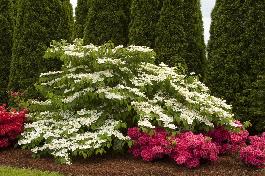
- Ovate-leaf viburnum: This viburnum has oval-shaped leaves and white flowers that bloom in the spring. It can grow up to 6 feet tall and wide.
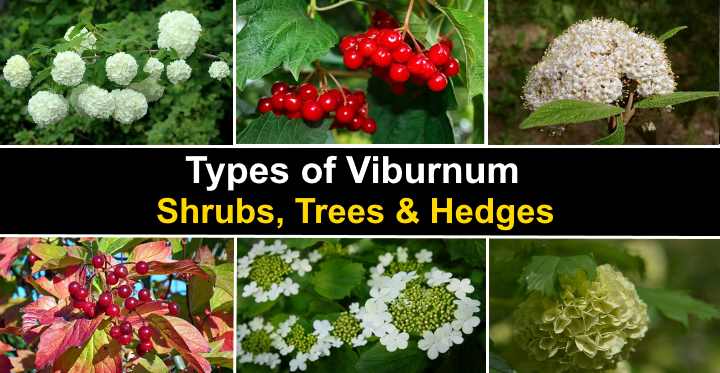
- Shasta viburnum: This viburnum is another white-flowering variety that blooms in the spring. It has a spreading habit and can grow up to 6 feet tall and wide.
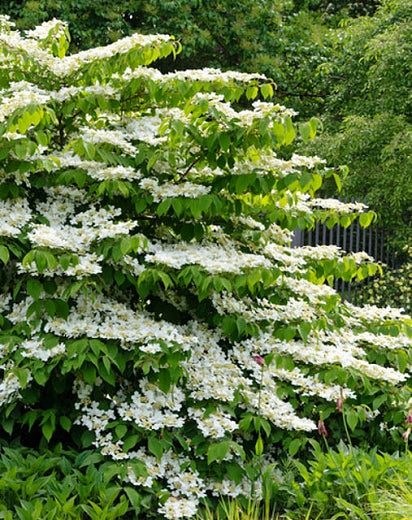
Choosing the Right Viburnum
When choosing a viburnum for your garden, there are a few factors you should consider:
- Size: Viburnums come in a variety of sizes, so it is important to choose one that will fit in the space you have available.
- Sunlight requirements: Some viburnums prefer full sun, while others prefer partial shade. Make sure to choose a viburnum that will thrive in the amount of sunlight your garden receives.
- Hardiness zone: Viburnums are hardy in different zones, so it is important to choose one that will survive in your climate.
- Flowering time: Viburnums bloom at different times of the year, so choose one that will add color to your garden during the time of year you most need it.
Caring for Viburnums
Viburnums are relatively easy to care for, but there are a few things you can do to keep them healthy and looking their best:
- Water regularly: Viburnums need regular watering, especially during the first year after planting.
- Fertilize in the spring: Apply a balanced fertilizer to your viburnum in the spring.
- Prune in the spring: Prune your viburnum in the spring to remove dead or damaged branches and to shape it.
- Mulch around the plant: Mulching around your viburnum will help to retain moisture and suppress weeds.
With proper care, viburnums can provide years of beauty and enjoyment to your garden.
Viburnum is a genus of flowering shrubs and trees that are native to North America, Europe, and Asia. There are over 150 species of viburnum, and they vary in size, shape, and flower color. Some popular viburnum species include:
- Snowball bush (Viburnum opulus): This is the most common viburnum species. It has white flowers that bloom in spring and summer, and it produces red berries in the fall.
- Korean spice viburnum (Viburnum carlesii): This viburnum has fragrant pink flowers that bloom in spring. It is a small shrub that is perfect for growing in a container or as a border plant.
- Doublefile viburnum (Viburnum plicatum f. tomentosum): This viburnum has white flowers that bloom in spring and summer. It is a large shrub that can grow up to 10 feet tall.
- Burkwood viburnum (Viburnum x burkwoodii): This viburnum has fragrant white flowers that bloom in spring. It is a small shrub that is perfect for growing in a shady location.
If you are interested in learning more about viburnum species, I recommend visiting Garden Wiki. This website has a comprehensive list of viburnum species, along with information about their size, flower color, and growing conditions.
FAQ of types of viburnum
Frequently Asked Questions About Viburnum
Viburnum is a genus of flowering shrubs and small trees that are native to North America, Europe, and Asia. There are over 150 species of viburnum, and they come in a wide variety of sizes, shapes, and colors. Some viburnums are known for their beautiful flowers, while others are prized for their colorful foliage or edible fruits.
Here are five of the most frequently asked questions about viburnum:
- What are the different types of viburnum?
There are over 150 species of viburnum, so it's impossible to list them all here. However, some of the most common types of viburnum include:
* Snowball bush (Viburnum opulus): This viburnum is known for its large, white flower clusters. It is hardy in USDA zones 3-8.
* Korean spice viburnum (Viburnum carlesii): This viburnum has fragrant, white flowers and reddish-purple foliage in the fall. It is hardy in USDA zones 4-8.
* Japanese snowball viburnum (Viburnum plicatum var. tomentosa): This viburnum has flat-topped clusters of white flowers and reddish-black fruit. It is hardy in USDA zones 5-8.
* Highbush cranberry (Viburnum trilobum): This viburnum has white flowers and blue-black fruit. It is hardy in USDA zones 3-8.
* Wayfaring tree (Viburnum lantana): This viburnum has white flowers and red berries. It is hardy in USDA zones 3-8.
- Where can I plant viburnum?
Viburnums can be planted in a variety of locations, but they prefer full sun to partial shade. They are also tolerant of a variety of soil types, but they prefer well-drained soil.
- How much care does viburnum need?
Viburnums are relatively low-maintenance plants. They need to be watered regularly, especially during the first year after planting. They may also need to be pruned in the spring or fall to remove dead or diseased branches.
- What are some common problems with viburnum?
Some common problems with viburnum include:
* Leaf spot: This is a fungal disease that can cause leaf discoloration and leaf drop.
* Pests: Viburnums can be susceptible to a variety of pests, including aphids, scale insects, and Japanese beetles.
* Winter damage: Viburnums that are not hardy in cold climates may suffer winter damage.
- How can I propagate viburnum?
Viburnums can be propagated by seed, cuttings, or layering. Seed propagation is the most common method, but it can be slow and unreliable. Cutting propagation is a more reliable method, but it requires some skill. Layering is a simple method that can be used to propagate viburnums from existing plants.
Image of types of viburnum
- Viburnum bodnantense is a deciduous shrub with large, white flowerheads that bloom in spring. It is hardy in zones 5-8 and can grow up to 10 feet tall.

- Viburnum carlesii is a deciduous shrub with small, white flowerheads that bloom in spring. It is hardy in zones 4-8 and can grow up to 5 feet tall.
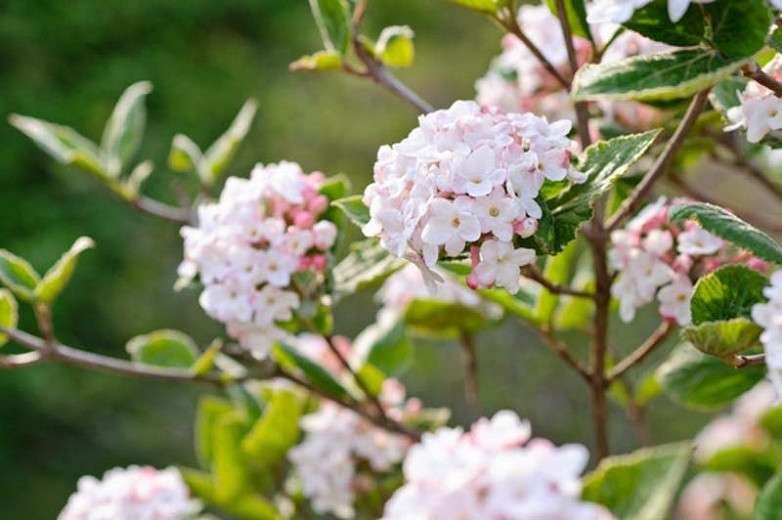
- Viburnum dentatum is a deciduous shrub with flat-topped clusters of white flowers that bloom in spring. It is hardy in zones 3-8 and can grow up to 15 feet tall.
- Viburnum opulus is a deciduous shrub with white flowerheads that bloom in spring. It is hardy in zones 2-8 and can grow up to 15 feet tall.
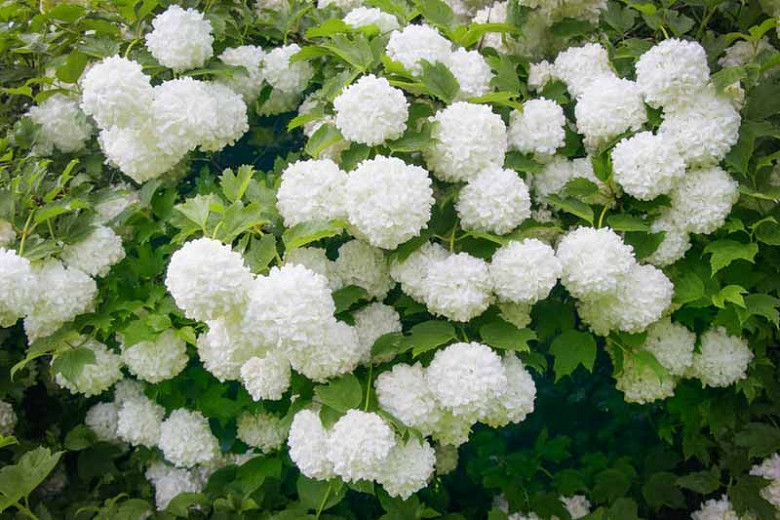
- Viburnum trilobum is a deciduous shrub with white flowerheads that bloom in spring. It is hardy in zones 3-8 and can grow up to 6 feet tall.
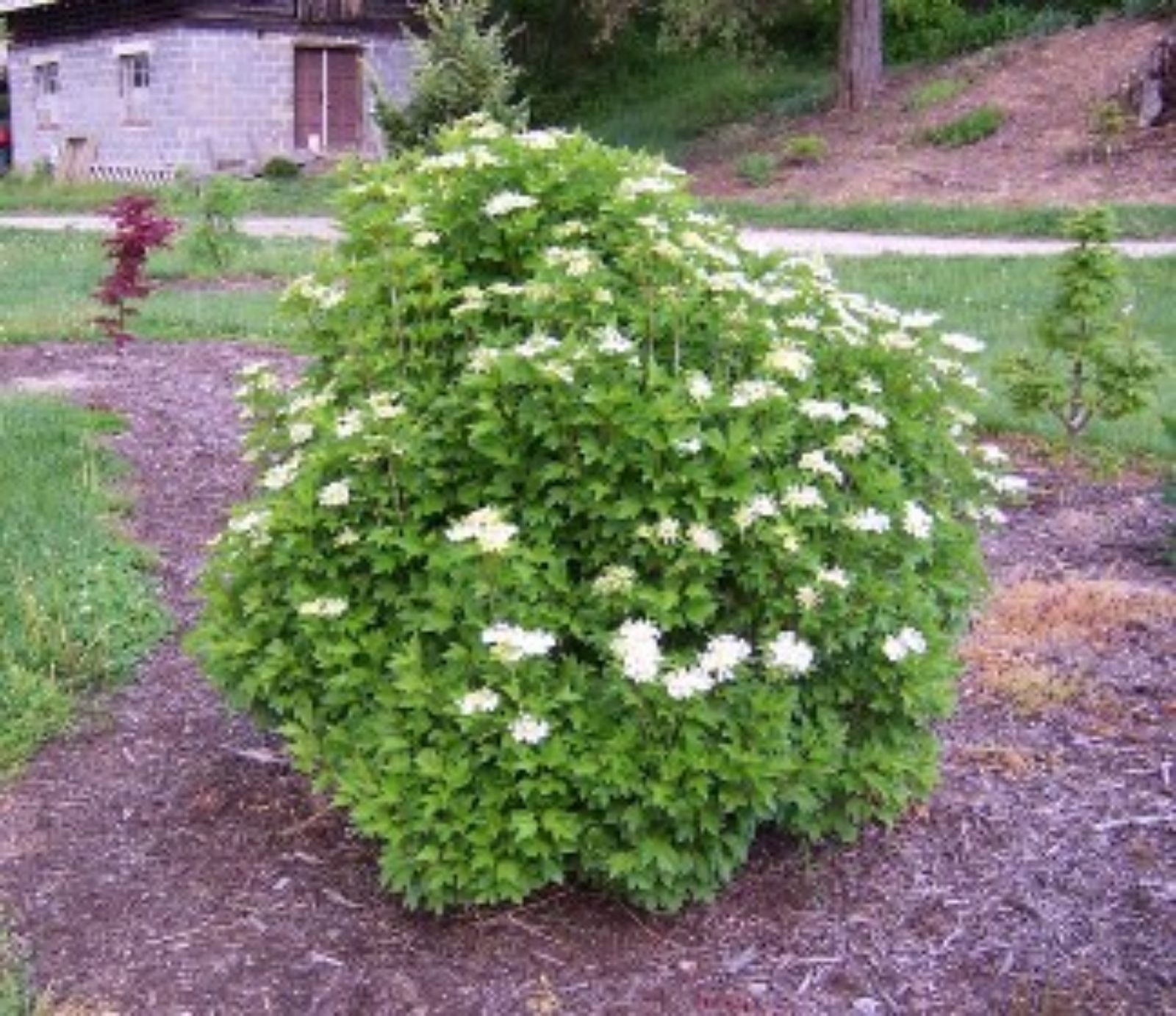

Post a Comment for " Types Of Viburnum Shrubs For Your Garden"